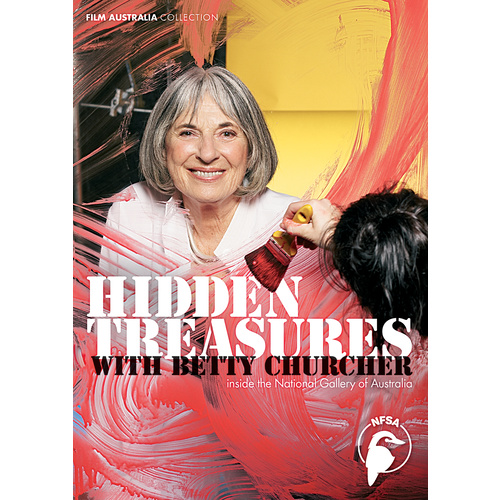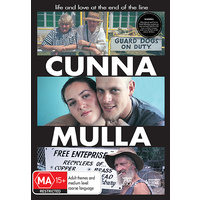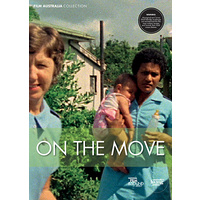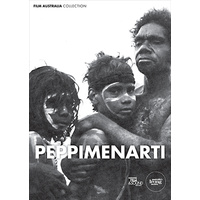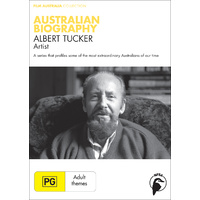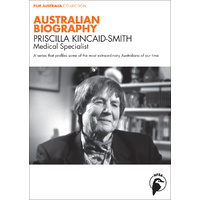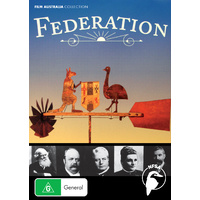2006, Total running time 75 Minutes. 15 x 5 Minutes
The National Gallery of Australia has more than 100,000 works in its collection—an extraordinary reservoir of creative vision and cultural history, from decorative arts to photography and sculpture.
Yet on a visit to the gallery, you’ll see only the tip of this iceberg. Carefully stored away are the things that can’t be placed on permanent display. These unseen gems include works of exquisite fragility, from brilliant hand-painted fabrics to delicate works on paper. From Australia, the Americas, Africa, Asia, Europe, the Middle East and Oceania, there are masks and carvings, lithographs and linocuts, set designs and stage costumes, sketchpads and handprinted books, marionettes and maquettes, teapots and textiles, and much, much more.
Now in this series of micro-docs, former director of the gallery Betty Churcher presents an insider’s guide to some of these “hidden treasures”.
In the entertaining, accessible style for which she is renowned, Betty Churcher takes us behind the scenes, sharing with us her passion and insights. From her unique vantage point, she makes intriguing connections between a range of different objects and artists, linking them to the stories that surround them. These are fascinating tales—about the works themselves, the people who created them and the challenge of preserving them—and a tantalising look at some of the ideas and influences that have shaped modern art across the globe.
Ballet Russe The National Gallery of Australia is home to one of the world’s finest collections of costumes from the celebrated Ballets Russes.
Matisse & Islam Islamic art, the Tahitian islands and the circus all provided inspiration for French artist Henri Matisse.
Max Ernst Collection & Lake Sentani Figures The indigenous art of Africa, the Americas and Oceania inspired European artists such as Jacob Epstein and Max Ernst, who in turn were an inspiration for Australian painter Albert Tucker.
Natalia Goncharova & Alexandra Exter Natalia Goncharova and Alexandra Exter were both Russian artists but where one moved to Paris and incorporated folk art traditions into her work, the other was drawn back to Bolshevik Russia and embraced the revolutionary art of constructivism.
The Australian Surrealists In response to the Second World War, a group of talented young Australians drew on the “dream” imagery of European surrealism to express their disquiet at world events.
Fiona Hall The exquisitely delicate work of Australian artist Fiona Hall reminds us of the fragile diversity of the natural world.
Violet Teague & Jessie Traill were part of a remarkable group of independent women who in the early 20th century were able to devote their lives to art.
Linocuts of Black, Syme & Spowers Dorrit Black, Eveline Syme and Ethel Spowers introduced to Australia a dream of European modernism—to bring art to the masses through affordable linocuts.
Poster Mania In the late 19th century, art literally took to the streets as Paris was flooded with eye-catching posters, made possible by the invention of lithography.
J.W. Lindt - The Mechanical Eye of the Camera It’s often said that the camera doesn’t lie but the photograph can be manipulated like any other art form.
Tommy McRae and Mickey of Ulladulla Working at the end of the 19th century, Aboriginal artists Tommy McRae and Mickey of Ulladulla drew the world around them with an extraordinary vitality and sensitivity to detail.
Godfrey Shawl, The Among the National Gallery of Australia’s rarely seen treasures is an astonishing embroidered shawl from Kashmir in India—one of the finest and rarest of its kind.
From Clay Maquette to Bronze It’s the small lively clay studies for the bronze civic monuments Burghers of Calais by Auguste Rodin and Monument to the Republic by Jules Dalou that bring us closer to the artists themselves.
William Dobell - Sketchbooks Perhaps more than most painters, William Dobell’s art relied on drawing so his sketchbooks are invaluable to our appreciation of his work.
Internationalism & Regionalism in Pottery Whereas Sydney artist Anne Dangar moved to France to focus on cubist design in ceramics, Merric Boyd and Milton Moon looked to the Australian landscape for inspiration for their pottery.
A Film Australia National Interest Program in association with Early Works. Produced with the assistance of the Australian Broadcasting Corporation.
© 2011 National Film and Sound Archive of Australia.
FREE Teachers' Notes - Download here
(200501700)
Director: John Hughes
Writer/Narrator: Betty Churcher
Year: 2006
Total Running Time: 75 Minutes
Classification: Exempt from classification
Curriculum Links: Visual and Creative Arts, English, History, SOSE/HSIE and Media.
SEE ALSO
| SKU | 200501700 |
| Brand | Film Australia |


